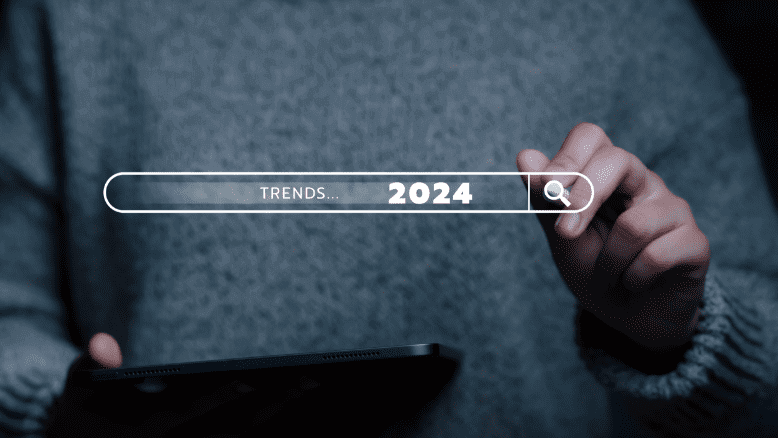7 Trends Reshaping Supply Chain as we know in 2024

7 Trends Reshaping Supply Chain as we know in 2024
The once-invisible arteries of commerce are morphing into a marvel of technology and data. The humble supply chain, long plagued by inefficiencies and blind spots, is undergoing a revolutionary metamorphosis in 2024. At the helm of this change is a potent cocktail of cutting-edge technology – generative AI, automated planning, data-driven insights, and more – promising a future where transparency, resilience, and value flourish. This isn’t just a tech upgrade; it’s a complete rewiring of how we manage the flow of goods, a seismic shift with ripples felt across industries and economies. This blog uses insight published by KPMG
Let’s dive deeper into the specific trends shaping this great supply chain transformation;
Trend #1 – Generative AI
Forget fancy software wizards. GenAI is about injecting your supply chain with serious analytical muscle. Think of it as a data-hungry beast that devours information, learns your company’s unique rhythms, and spits out actionable insights to improve everything from procurement to production. It’s not about magic tricks, it’s about crunching massive data sets to predict problems before they bite you in the wallet.
Actionable Tips –
- Map the pain points – Identify specific areas where GenAI can tackle your biggest supply chain headaches, like late deliveries or inaccurate forecasts.
- Level up your data crew – Don’t expect GenAI to work with dusty spreadsheets. Invest in cleaning up your data mess and training your team to feed the beast the right information.
- Baby steps for big gains – Start small with pilot projects to test the waters. Once you see GenAI’s magic, you can scale up and automate like a champ.
Trend #2 – AI-Powered Planning
No more flying blind with guesswork and crossed fingers. Low-touch planning powered by AI is like having a crystal ball for your supply chain. It churns through complex scenarios, predicts demand fluctuations, and tells you exactly how much stuff you need to make, where to store it, and how to get it to customers without breaking the bank. No more late nights with Excel spreadsheets – AI takes the wheel and gives you time to focus on the big picture.
Actionable Tips –
- Train your planning team – Teach your folks how to interpret AI outputs and translate them into actionable plans. Data literacy is key to unlocking the full potential of this tech.
- Goals, not gadgets – Don’t let AI technology dictate your strategy. Set clear performance goals first, then let AI find the most efficient path to achieve them.
- Data is king, quality is queen – Garbage in, garbage out. Make sure your data is clean, consistent, and readily available before letting AI loose on it.
Trend #3 – Data
Your supply chain is drowning in a sea of data, but most of it sits there like forgotten treasure in a dusty attic. The key is to stop hoarding and start using. Focus on specific goals, collect data that actually matters, and clean it up so it’s fit for AI’s discerning palate. Once you do, you’ll unlock insights that can optimize inventory, predict equipment failures, and even spot opportunities for new products.
Actionable Tips –
- Focus on the prize – Don’t just collect data for the sake of it. Identify specific problems you want to solve and gather data that directly addresses them.
- Cleanliness is next to godliness – Dirty data is useless data. Invest in quality checks and data governance to ensure your information is reliable and consistent.
- Small steps, big leaps – Start with one or two data-driven projects to prove the concept. Once you see the results, you can scale up and transform your entire operation.
Trend #4 – Transparency Beyond Tier 1 & Tier 2
You can’t manage what you can’t see. That’s why extending your visibility beyond your immediate suppliers is like turning on the lights in a darkroom. Control tower technology and digital twins give you a panoramic view of your entire supply chain ecosystem, from raw material sourcing to final delivery. This means you can spot hidden risks, identify unethical practices, and even trace the carbon footprint of your products.
Actionable Tips –
- Partners in crime – Don’t go it alone. Collaborate with suppliers and industry partners to share data and build a clearer picture of your extended supply chain.
- Cross-functional teams – Break down the silos and bring together procurement, sustainability, and logistics teams to make the most of your newfound visibility.
Trend # 5 – Low-code platforms
Forget clunky custom software projects that take months and leave you chained to IT. Low-code platforms are a game-changer, letting business users (even those with limited coding skills) build apps that streamline your supply chain in real-time. Imagine automating purchase orders, tracking shipments with live data, or building custom dashboards showing exactly where your inventory is – all without waiting for months and praying the code compiles. These platforms are pre-loaded with integrations and APIs, letting you connect your previously siloed systems like Lego blocks. Low-code isn’t just a tech perk, it’s a mindset shift – empowering your team to react to disruptions, adapt to new strategies, and build an agile, resilient supply chain that fits your specific needs.
Action steps for 2024 –
- Map your pain points – Identify repetitive tasks or clunky processes causing bottlenecks. These are prime candidates for automation.
- Build basic, iterate fast – Start small with simple apps you can build quickly. See the value, then scale up from there.
- Empower your business users – Give them the tools and training to become your internal supply chain app-building superheroes.
Trend # 6 – ESG and Scope 3 emissions
Remember when sustainability was just about recycling paper? Those days are over. Scope 3 emissions – the hidden carbon footprint lurking in your entire supply chain – are now under the spotlight. Governments are mandating reporting, investors are demanding action, and customers are choosing eco-conscious brands. But tracking all those emissions across countless suppliers is a tangled mess.
Action steps for 2024 –
- Start with your biggest spenders – Prioritize suppliers contributing the most to your carbon footprint. Get them on board with data sharing and emissions reduction goals.
- Invest in carbon accounting tools – Ditch the spreadsheets and manual estimations. Cloud-based platforms simplify data collection and analysis, giving you a clear picture of your supply chain’s true environmental impact.
- Educate and collaborate – Train your team on Scope 3 and involve them in finding creative solutions. Work with sustainable suppliers and reward their efforts.
Trend # 7: Electric vehicles, transport, and logistics
Forget gas-guzzling trucks and warehouse workers running around like headless chickens. The future of logistics is electric, automated, and data-driven. Imagine self-driving delivery vans zipping through city streets, robots efficiently picking and packing orders in smart warehouses, and AI optimizing routes in real-time to save time and fuel. Sustainability meets efficiency – a win-win for your business and the planet.
Action steps for 2024
- Assess your fleet – Analyze your transportation needs and identify suitable routes for electrification. Start with short-distance urban deliveries first.
- Embrace automation – Look for opportunities to automate tasks in your warehouses and distribution centers. Free up your humans for higher-value work.
The future is no longer a distant horizon; it’s knocking on your warehouse door. The question isn’t if you’ll embrace these trends, but how quickly and effectively you do. Those who hesitate will find themselves at the mercy of disruption, while those who lead the charge will shape a future of seamless flow, resilience, and responsible value creation.

